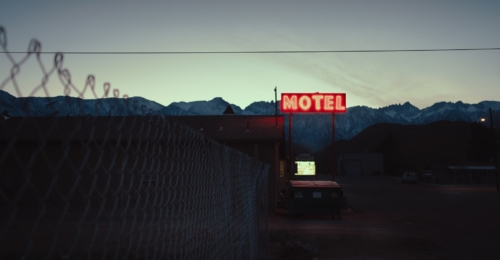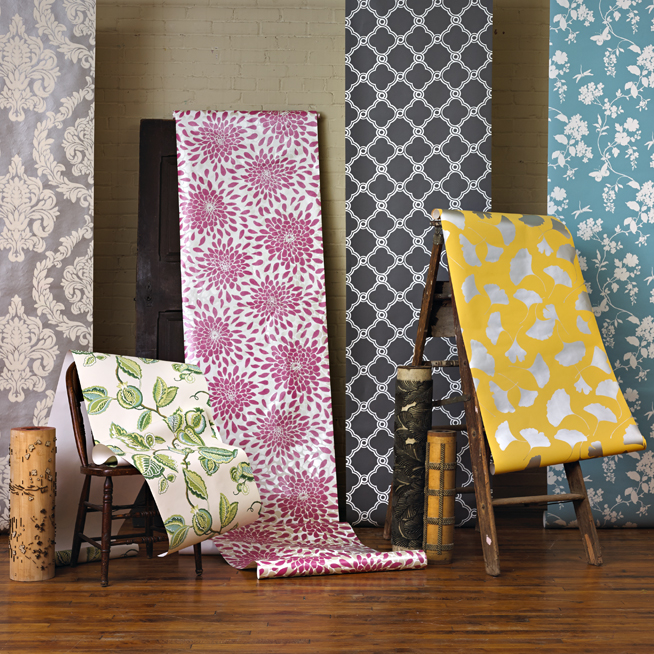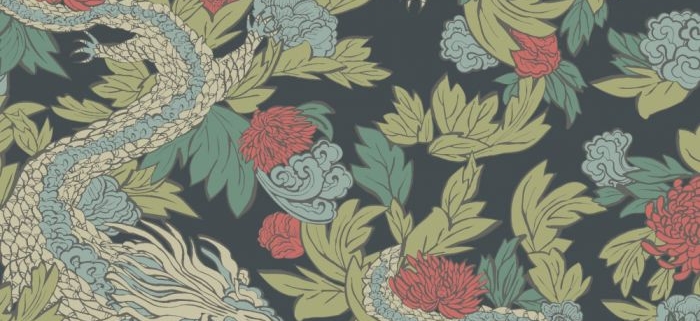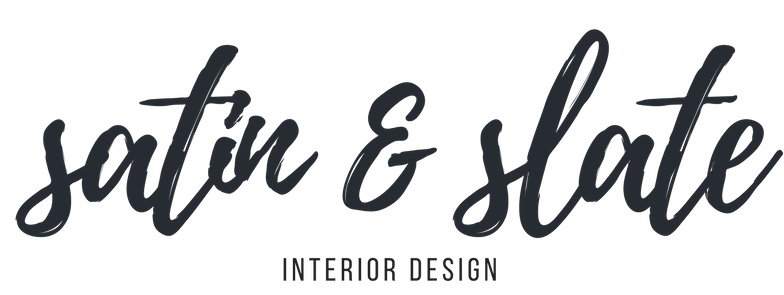Wallpaper: It’s not what you think

White Room through doorway. Photo by Breather from Stocksnap.
We’re not talking about the motel floral print that comes to mind either.
You know the one, right?
Picture this.

Motel sign at dusk. Photo by Jake Stark.
You’re on a road trip with family or friends. You pull over at a rest stop for the night and find yourself in a desert motel with that floral print wallpaper. It’s peeling from the edges, you can see the old yellow glue struggling to pull the paper back to the wall.
We promise, it’s not what you think.
In the wonderful modern world of wall coverings, somewhere a collective of artists conspired together and said, “Enough is enough!” and opened the door to a sea of designs and textured prints that spans further than floral print.
Some History.
Wallpaper was stated to have started in Ancient China around 200 B.C. and became popularized during the technological advancement of paper in the 20th century.
With a lot of bare walls to be covered, people began to develop long lasting paper and dyes and created ways to make the application and removal process easier.
Designs.

A small collection of Yorks wallpaper collection. Photo from the York websites product search page.
Wall coverings come in many different types which include:
- Vinyl
- Solid Sheet Vinyl
- Vinyl Coated Fabric
- Vinyl Coated Paper
- Non-Woven
- Easy-Walls
- Pre-pasted and Grasscloth
Vinyl wallpaper is mostly used due to its durability. Vinyl is easy to clean and with its ability to withstand steam, it’s a great choice for kitchens and bathrooms.
Pre-pasted comes with an adhesive base that you won’t have to apply during installation. Just one step less.
Grasscloth is woven, made from a lot of natural materials and is also the most textured out of the other types.
Whatever wallpaper you want to use is up to you. Be sure to prep your walls and patch up any holes or cracks to ensure a smooth and seamless application.
Installation.
Before you roll out the goods and slap them on the walls, like any design project, you want to map out the space you’ll be working with.

People Painting a house wall. photo by Roselyn Tirado.
Wallpaper and wall coverings come in rolls and measure in at 20.5 inches wide and 16.5 feet long.
Measure the length and width of the roll of paper you’re going to use, cut them into panels and then adjust those measurements to the wall you plan to work with.
The installation process has significantly advanced today with peel and stick methods. Peel and Stick aides in no longer leaving behind unwanted residue when removing wallpaper.
This is great news for those who rent spaces with little room for renovation and want to add a little flair to their environment. Instead of taking the risk to repaint over walls you can’t per property policy, it’s okay to jump for joy with knowing you have options.
Peel and stick wall coverings have pre-added adhesive sides where all you’ll need to do is spray water on the back of the paper to activate it.
Happy tenant, happy landlord, happy life.
Using the paste method to hang your wallpaper is the easiest to do but it can leave behind unwanted residue. You can grab a tub of Roman brand adhesive for wallpaper at almost any hardware store.
All you’ll need is a brush to apply the paste to the back of the paper.
Before applying, be sure to soak the wallpaper. Soaking is when you prep the paper for application by letting it sit for around 8 – 12 minutes to allow the paper to settle at room temperature.
Putting the paper up right away will cause it to expand and create more air bubbles and creases.
With either method, after soaking, use a roller to smooth out the paper to limit creases or air bubbles. Air bubbles are common during the process. They should go away once the adhesive dries. If not, you can use a pin to free the trapped air and smooth down the paper.
Depending on how you decide to install your wallpaper, it falls on the medium to intermediate level of the DIY friendly scale.
Ever wanted a mural painted on your wall but couldn’t find an artist to do it? Well, wallpaper can help you achieve that look.
Fabricut offers so many classic and simple designs that bring forth a subtle elegance with their patterns.
If simplicity or geometric prominence isn’t your thing, maybe Antonina Vella’s intricate designs can bring more vibrancy into your home with gorgeous colors and delicate patterns ready to jump off the walls and add more life to your interior decor.
If you’re looking to lather your walls with some personality, we at Satin & Slate can help you customize whatever space you’d like with our unique selection of wall coverings from our fully equipped studio showroom. A mouthful, I know.
Whatever your ideas, we’ve got styles from Fabricut, Seabrook, Arte and many more to fit your interior design needs. From champagne to maroon or a blend of the two, we’ve got you covered.
Whether the whimsical elegance of Ashford House’s designs or York’s unapologetic textures that transcend from the surface, wallpaper has made an incredible comeback and it’s not going anywhere; rightfully so.
Desert motel glue residue ridden floral print wallpaper aside, let the modernized industry of wall coverings be your key into wallpaper wonderland, without the madness.
About Us:
Founded in 2017, Satin and Slate is one of the elite interior design studios in Southern California. Located in Long Beach, this dedicated team of designers oversees from kitchen and bathroom renovations to commercial projects. Equipped with their own showroom/studio they can satisfy the needs of any client. Featuring clean lines, bright colors and fresh ideas Satin and Slate’s mission is to bring your vision to life and help transform your space into something extraordinary.

















 https://unsplash.com/photos/_NzW-__ohkM
https://unsplash.com/photos/_NzW-__ohkM